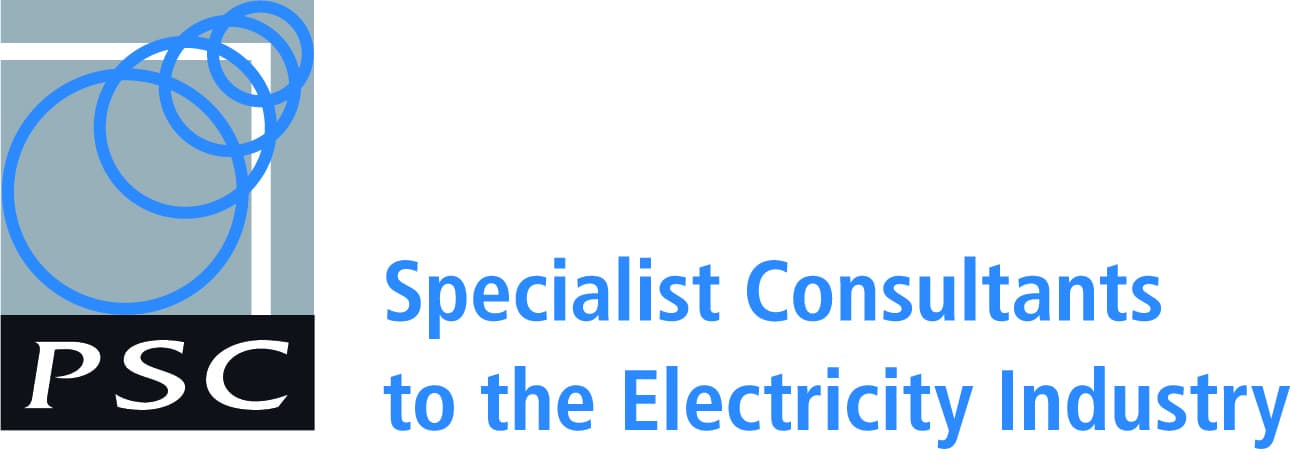
What is DER?
Distributed Energy Resources (DER) is about the aggregation and control of distributed energy generation, demand and storage. This includes:
- Generation: solar (PV), wind, fuel cell, co-gen, diesel
- Energy storage and efficiency
- Electric vehicles
- Demand response
- Load management
- Microgrids
What is IoT?
Internet of Things is the concept of devices being interconnected via the Internet with the ability to carry out functions autonomously. A device could be as simple as a thermostat controlling a domestic heat pump that periodically reports temperature measurements to a “cloud” database and allows the temperature setpoint to be changed remotely by any authorised users with a mobile device anywhere with an Internet connection. An extension to the basic IoT concept is Industrial Internet of Things or IoT where devices within a factory or plant communicate directly with each other and usually via some form of factory hub, or “edge computing”, with cloud based platforms or services.
The first international Internet of Things conference was held in Zurich in 2008 which is widely regarded as the birth date for IoT as it is recognised today, although there are examples of earlier projects exhibiting the characteristics of IoT. Prior to this date there are several examples of projects featuring widely distributed, low cost
measurement devices connected to servers via the Internet described in technical papers. A notable example was the Virginia Tech FNET project described in an IEEE publication in 2001. This wide area frequency measurement network still exists today.
IoT is essentially a multi-tiered outsourcing model. Payment is typically a monthly subscription based on resources used, or resources agreed to be available to be used. Typically, an Industrial Internet of Things provider buys cloud computing services for infrastructure (IaaS) and database platform (PaaS) and on sells this with an added software layer (SaaS) with application programming interfaces for device management, device communications and, depending on the target market, there may be added components for data analysis and presentation.
Evolution of Utility Control Systems to IoT
The power of the Industrial Internet of Things has seen IoT spread from non-critical consumer applications, such as domestic heat pump control, to encompass mission critical assets and systems of many types. In some regions the deployment of “smart meters” for electricity, water and gas has seen IoT technology leap forward in its penetration of the utility industries. The introduction of this technology saw efficiencies in meter reading and provided limited additional functionality such as remote disconnection of supply.
In many regions metering data is made available to consumers online via web browser and web applications to assist in making informed demand management decisions. The smart meter is a key component of the “smart grid” which is enabled by Internet communications mart metering has provided power companies with data from the edges of the network that was never available previously. With increasing penetration of distributed generation throughout the network, better, more complete data has become important to maintaining quality of supply. Better information has supported more complete network modelling providing key data for better network management, reduced outage times and efficient demand management.
Smart metering and Industrial Internet of Things devices are key enablers for advanced “smart grid” solutions such as outage management and demand management allowing low cost schemes to be implemented for non-invasive energy conservation, efficiency, demand reduction and voltage optimisation.
For many years, many utility organisations have operated with a mixed model of internal resources and external resources to manage SCADA and DCS. IoT provides an outsourced mix of communications capability and cloud based computing resources. A significant difference between traditional outsourcing and “outsourcing” with IoT is the communications capability. Communications using the public Internet offers no tight guaranteed service levels and often no assured remedy to fix some Internet outages. In PSC’s experience with its own small internal research project using IoT to aggregate PV generation and control electric vehicle charging, the communications performance using the Internet can be observed to deteriorate over a period of several days before returning to normal. Where guaranteed quality of service is required, utilities may opt for carrying IoT traffic over private networks rather than the public Internet. Public Internet provides a high degree of coverage of residential dwellings, of mobile devices, commercial and industrial premises facilitating capabilities that would otherwise be uneconomic to implement. While long term availability statistics of public Internet connectivity is high, outages do occur and can be very widespread.
IoT offers unprecedented flexibility for interconnecting sensors and “smart devices” beyond the reach of traditional utility SCADA and DMS to help achieve the electricity industry vision of a “smart grid”. Cloud based data storage and analytics provide the capability to realise ideas like the self-healing grid and to manage embedded domestic generation. Individually such generation is insignificant, therefore cost prohibitive to monitor by conventional power company SCADA. With increasing penetration levels of distributed generation, battery storage and other new technologies, monitoring, aggregation and control with be essential for an efficient and reliable electricity supply. To achieve scalability of computing resources and data handling capacity well beyond that which is achievable with conventional SCADA, proposals for cloud based systems with Internet connectivity are appearing in the technical press for smart grid monitoring and control.
Electric power industry SCADA vendors are now both partnering with the more traditional IT industry heavyweights and being directly challenged by them as they begin to embrace industrial IoT technology in their product offerings. Cloud based infrastructure, platforms and software particularly where appropriate for ‘big data” analytics and information sharing are challenging the traditional SCADA/EMS/DMS business models. Utility concerns over cloud security, control and ownership of data and compliance with regulations for storing information have limited the uptake of this technology in the past but this is changing rapidly. Companies such as EnerNOC, managing demand for many utilities, industrial, commercial and community establishments, have been catalysts for the growing acceptance of cloud and Internet technologies in the electricity industry.
Industrial Internet of Things Providers
The IoT platform market has rapidly become crowded with many service providers and product vendors. Some providers concentrate on providing a platform (PaaS) to handle device connectivity and data management. Others add a significant software layer (SaaS) so that end users can control their IoT system with access to devices, data and analytics through a web browser without having to install any software. IoT pricing plans vary widely with IoT providers clearly targeting different markets and different scales of device deployment, from free hobbyist and trial accounts, per device accounts; through to accounts aimed at deployments of thousands of devices.
Data security and data integrity should be at the forefront of any commercial use of IoT. Common wisdom is that the larger and more well established the IoT service provider is, the more likely they are to have invested in the highest levels of security and data integrity available and the more likely they are to remain in business. There are many young IoT startups as well as IoT providers that have been in existence for at least 10 years. IoT offerings are also available from many of the IT industry heavyweights (IBM, Microsoft, Amazon, CISCO, Oracle etc.). Choosing carefully is essential if costly redevelopments and platform migrations are to be avoided and longevity is to be assured.
Challenges
IoT for smart grid and DER faces the same challenges thatother IoT users face:
- Availability
- Bandwidth
- Latency
- Security
- Utilisation
- Delivery
Using the Internet, availability, bandwidth and latency are tough challenges as there are many components in the chain that neither the end user nor the IoT service provider has control over. The larger IoT providers with extensive infrastructure can provide some relief with options for how and where infrastructure and platforms are provisioned.
Smart “edge computing” or gateway devices can assist to hide availability and connectivity issues by providing local capability of temporary storage, analysis and reporting for locally gathered data. None of these measures provide a perfect solution so it is essential to understand the application requirements and the limitations of the available technology. IoT may not be suitable for everything.
The main security measures are strong authentication to control access to the IoT device, IoT cloud platform and traffic encryption. Data traffic between devices and the IoT platform includes access keys which must remain secret to maintain security. IoT devices must be secure so that they cannot be commandeered and used for unintended purposes. IoT cloud platforms must be secure so that data cannot be tampered with or stolen. Encryption of data stored on IoT cloud platforms does not yet appear to be a common offering.
According to IBM nearly 90% of data collected by IoT will remain unused. Underutilisation represents wasted investment and continued wasted expenditure. IoT service providers charge customers based on volumes of data, numbers of devices and other services consumed. Artificial Intelligence and cognitive computing appear to be developing technologies aimed an extracting information from large volumes of data that would otherwise be unused. A challenge is may enterprises have limited experience of applying analytics. Effectively applying analytics to the data collected and producing actionable results is critical to releasing value from the IoT investment.
Delivery of meaningful IoT data to end users is just as important as collecting the data. End users often need timely information that clearly shows how systems, processes and plants are behaving and how they can be improved. Data and process visualisation is an essential element of the IoT investment, not just for the end users of information but also as a diagnostic tool.
How can PSC help?
PSC has structured its portfolio of service offerings to mirror the requirements of electricity sector clients. From this portfolio PSC can assist clients with services to take advantage of opportunities by embracing new technologies like IoT rather than regarding it as a disruptive threat.
PSC Strategic Advisory
Available to assist clients with development of asset and information strategies, asset and information management plans.
PSC Analytics
Available to assist with developing and implementing data science based advanced analytics to unlock the value of big data to solve complex challenges and make sound investment and operational decisions.
PSC DER
To design operate and optimise the effectiveness and efficiency of DER requires new approaches to monitoring and control. Traditional SCADA does not scale to meet the requirements of an enormous amount of data nor does it provide an economic means of acquiring data from many widely dispersed, but individually small, energy resources. PSC understands the challenges that DER brings and that IoT is part of the technology mix for effective DER management.
PSC Operational Technologies
Provides clients with access to a range of expertise to assist with planning, design and implementation of the telecommunications and networking, security, measurement, control and automation; of an IoT implementation.
PSC Markets
Includes a dedicated group of software developers experienced in the development of software in the electricity and other energy markets. This team combines electricity industry knowledge and software development expertise vital in developing systems for data acquisition. control, automation, analysis and data presentation. The combination of knowledge and substantial project experience with web based software systems and real time control systems is an ideal match for assisting clients with IoT application development.
Services
Industry
Emerging TechnologyRegion
New Zealand
